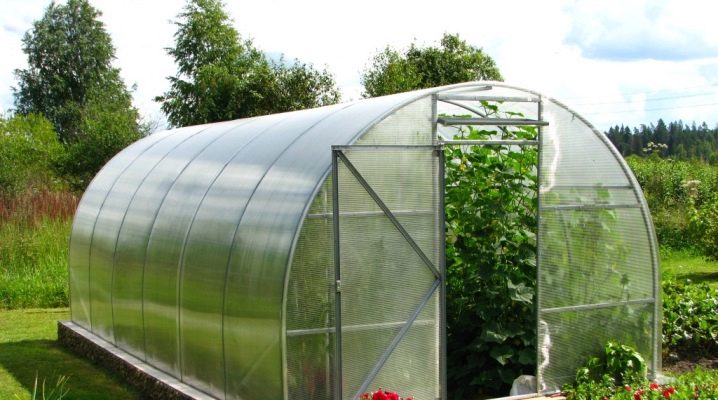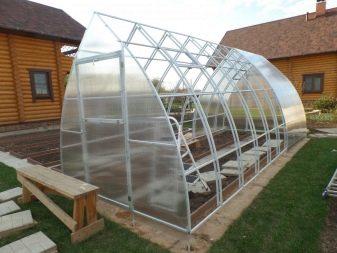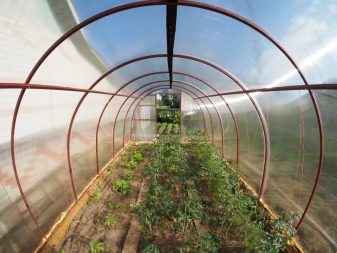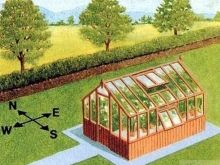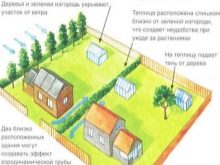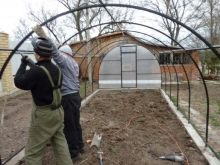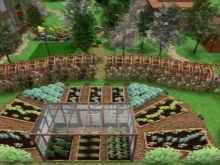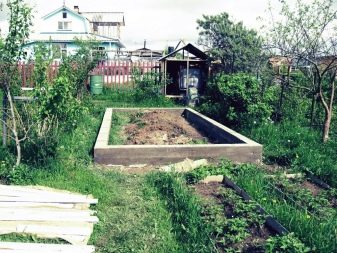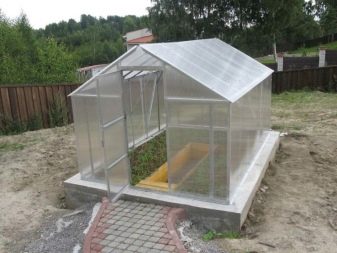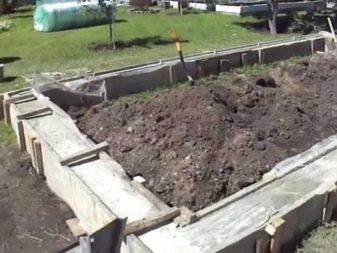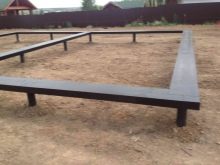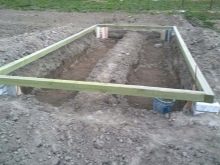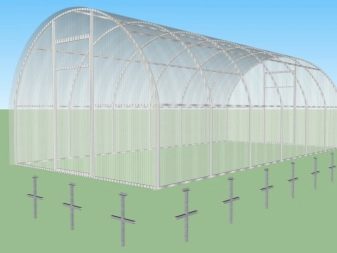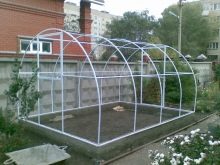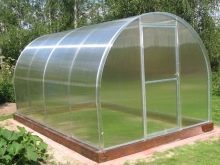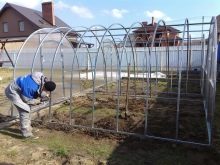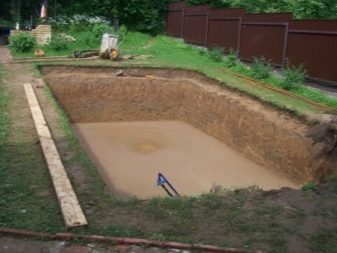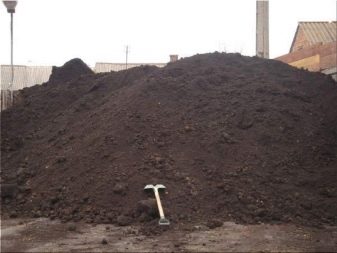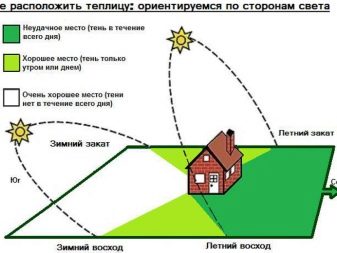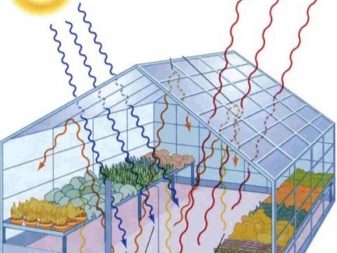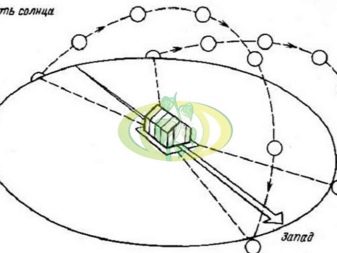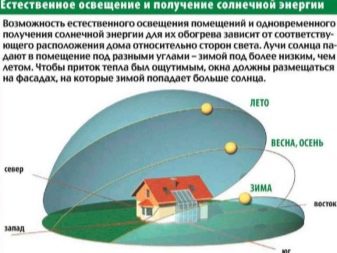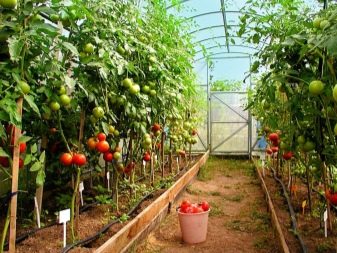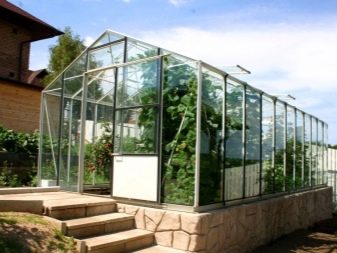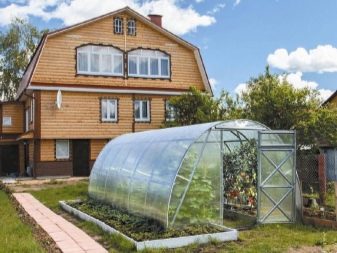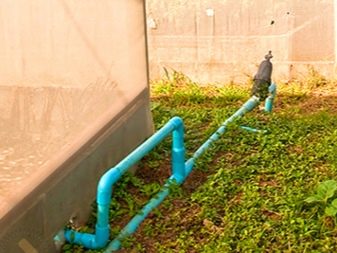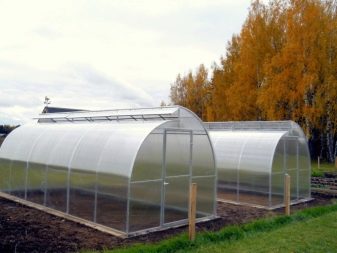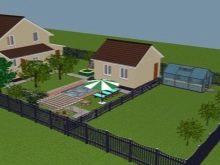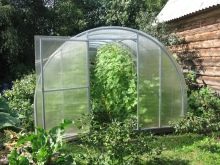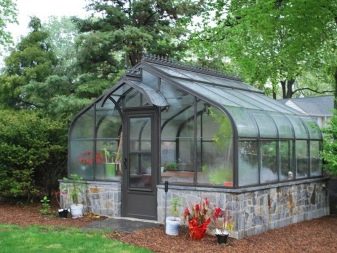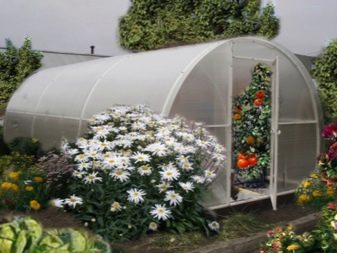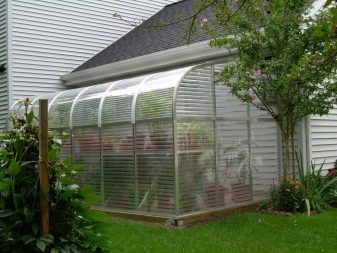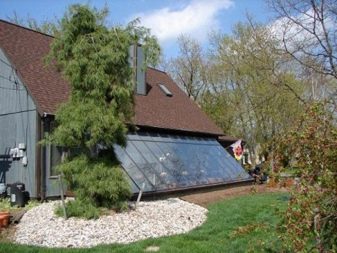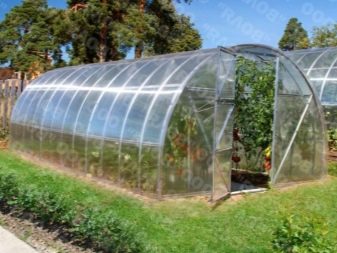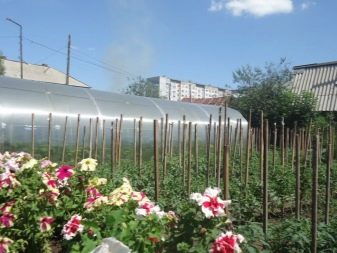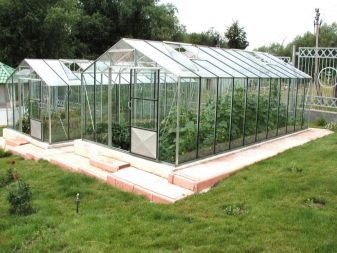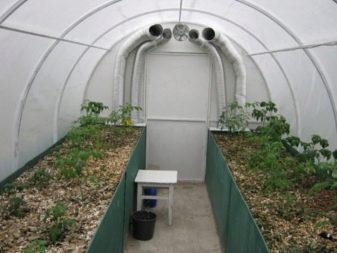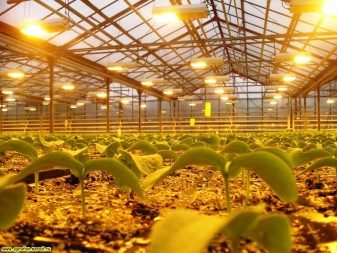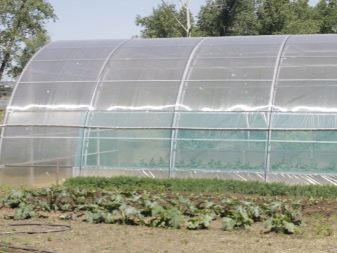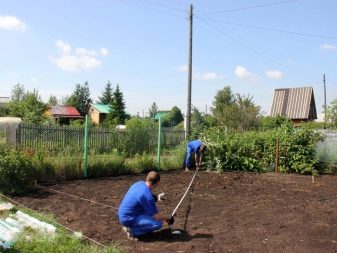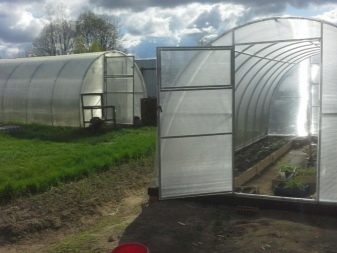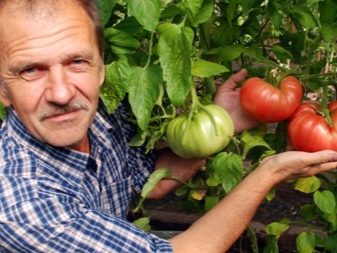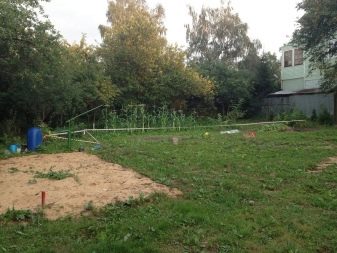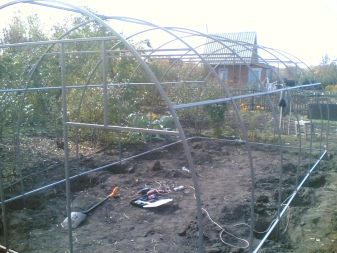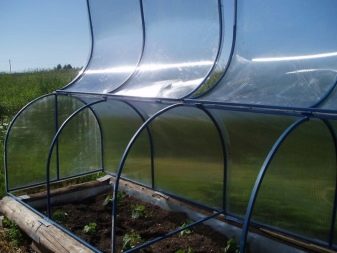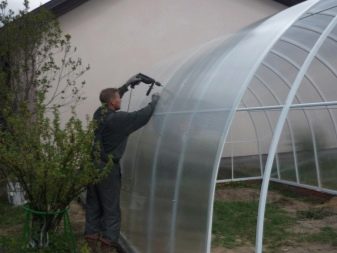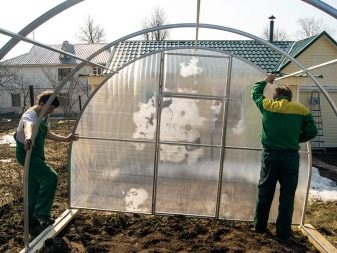How to locate the greenhouse in the parts of the world?
Owners of private houses and country plots have the opportunity to build a greenhouse, where it will be possible to harvest not only in summer, but throughout the whole year. What could be more delicious than a fresh cucumber or a juicy ripe tomato, picked right from the garden? From the decision to build a greenhouse to its implementation, it may take some time to get a good harvest from the garden, it is important to take into account all the necessary requirements for this building.
What is guided by?
So, the decision to build a greenhouse on the site has long been ripe, it's time to tackle this issue specifically, and not to postpone it. First of all, it is necessary to determine the place where the greenhouse will be located. The choice of location is a very important point, the quality and quantity of future harvests directly depends on this.When designing a greenhouse, it is important to understand how to properly place it in relation to the cardinal points, outbuildings and a residential house.
Before starting work, it is necessary to study the features of the site.on which it is planned to put the construction. A greenhouse should be installed so as to provide the plants with the greatest amount of sunlight, which is so necessary for their vital activity. Proper orientation on the terrain will make the final choice, and build a greenhouse on the most suitable site for this.
Landscape Features
Starting construction, many gardeners and gardeners mistakenly choose a place at the very end of the site, which is not quite true. According to experts, the construction should begin not far from home, so when you sum up communications, you can spend less time and money.
Before starting work, study the features of the landscape. and find out the height of groundwater, because this will depend on the yield. If the groundwater is very high, there will be a chance of flooding the building. A large amount of excess moisture will also have a bad effect on planted plants, as they will rot, moss will appear. Therefore, it is important to examine the groundwater map before construction.
If it turned out that the greenhouse will be located exactly on the site with a large amount of water, and there is no other place, it is necessary to pre-build the foundation. This issue can also be solved with the help of drainage ditches that are pulled along the greenhouse.
If the choice fell on the establishment of the foundation, you can make two options: slab and pile.
The easiest way to make a slab foundation for this:
- dig a pit, the depth of which should be up to 0.3 meters;
- a layer of sand is poured at the bottom of the pit and leveled;
- set the formwork;
- lay waterproofing;
- crushed stone or metal rods are prepared for reinforcement.
To create a pile foundation, you should drill holes, pour gravel, install piles, fix timber formwork and pour concrete. After the concrete hardens, the piles are connected by a metal pipe.
If the choice fell on a pile foundation, then you should know that under it there will be a layer of air, so it is installed if a spring greenhouse is planned. If there is a slope on the site, this type of foundation will be ideal because the relief is leveled.
To prevent large amounts of water from accumulating in the ground, a drainage system is installed, consisting of:
- catchment basin;
- special channels to remove excess liquid;
- drainage cover.
Using our recommendations, you can make a fertile area and on problem soils.
Soil quality
To obtain a good harvest, the quality of the soil is of paramount importance, so you should make a hole in the ground on the plot in order to understand which soil is under the top layer. Often, gardeners are faced with the fact that the land is not entirely suitable for obtaining high yields. It turns out that under the upper layers of the soil is clay. Since the clay does not pass water well, constantly accumulating water will contribute to root rot.
The best option would be if there is sand in the selected area. If, however, there is clay in the territory, you should dig a ditch that will fit the size of the greenhouse, pour gravel into it, and sprinkle sand on top. Fertile soil is used for the top layer.
Accounting light
When choosing a place for a greenhouse, the illumination of the site is taken into account and the building is located in two directions of the cardinal directions:
- from North to South;
- from east to west.
Most often, gardeners use the second option, in this case the sun illumination will be the highest. Install the greenhouse should be so that the seedlings could receive the greatest amount of light, especially in the early morning hours. From morning to noon, the sun's rays warm up the plants well, creating a favorable environment for their photosynthesis. This is the period when the sun's rays bring maximum benefit to seedlings.
With this arrangement, you can take care of plants and get a harvest year-round. If the greenhouse is located from north to south, it should not be used all year round, since in this case the lighting will be uneven. Greenhouse structures should be installed in the sunniest places so that the rays do not leave the greenhouse as long as possible. Morning warming is especially important, otherwise the plants may freeze and stop growing.
Proximity to home and communications
When building a greenhouse, consider the distance from it to the house and communications. If you plan to build a greenhouse for the period of harvest from spring to autumn, the proximity of buildings and communications does not play a big role.It is necessary to leave the necessary space so that it would be convenient to approach the greenhouse with garden wheelbarrows, buckets, hoses. It is important that irrigation water is near.
If you plan to greenhouse, which operates year-round, the distance plays a big role. Year-round greenhouses equip system for heating and irrigation. The cost of consumables, the time for their installation depends on how close the communication will be made. When laying pipes on the site, take into account how to do it correctly, so as not to interfere with buildings, trees and shrubs. When building a foundation, you should immediately lay a water pipe, so you can save on consumable material and time for its installation.
When installing a water supply system, you can facilitate the work in the greenhouse and install a device for irrigation. At the initial stage of construction should consider the paths and access roads. If you follow all the recommendations, you can get maximum pleasure from work at insignificant costs.
Wind and wet protection
The microclimate inside it depends on how well the greenhouse will be located.You should not place a greenhouse between buildings, as there will be a constant draft in this passage. Wind flows can significantly change the temperature inside the greenhouse, on average it can decrease by 5 degrees.
To prevent the structure from cooling by strong winds and drafts, you should:
- place to build on the leeward side;
- take care of the hedge, plant a row of trees or tall shrubs;
- build a screen to protect;
- provide for outbuildings.
For the erection of the protective screen does not take much time, you can install it from slate sheets, which are placed along the greenhouse. The distance between the protective screen and the greenhouse should not be less than 3 meters, so the shadow will not obscure the structure from the sun's rays.
When building a hedge, rows of ornamental bushes are planted at a distance of up to 15 meters from the greenhouse. The hedge will grow in time longer than the construction of a protective screen, but it will also serve much longer. When planting trees on a plot, their location relative to the greenhouse should be considered so that they do not give shade to the greenhouse and do not litter the roof with fall foliage.
It is possible to protect the structure from the wind by attaching the structure to the wall of a residential building or placing it very close to it. It should be taken into account how much the greenhouse will be lit, and whether the walls of the house will block the sun's rays.
When choosing a place for a greenhouse, they take into account the quality of the soil at the summer cottage, as the quantity and quality of the crop depends on it.
To the collected fruits pleased gardeners, you must adhere to certain recommendations.
- The design is established on a flat terrain. If the area is on a slope, pour in the ground and level the surface.
- Do not strongly compact the soil, so as not to disrupt its structure.
- Conducting a geological examination before construction will allow you to find out how suitable the soil is for the greenhouse.
- Use the drainage system to eliminate excess moisture.
Heat preservation
Even if the place for the greenhouse structure was chosen correctly in relation to the cardinal points and the buildings, there is a possibility that the cold air may cause damage to the root system of the plants. This is especially true of greenhouses, which are located directly on the ground without a foundation.
Heat loss can be avoided using the following recommendations:
- in order to keep the heat indoors, it is built on a base from aerated concrete, foam concrete, expanded clay concrete up to 60 cm high;
- in order to save heat, the beds rise from the ground to a height of 50 cm, thereby greatly increasing the yield of plants.
- If you plan to use glass when building a greenhouse, then choose double sheets that are bonded with glue.
The most important factor for the growth and fruiting of seedlings is the greenhouse illumination, so it is important to maintain an optimal balance when using artificial and natural light. In order for plants to get the most heat and light, it is better to install polycarbonate roofs of the arched type.
Site preparation
In preparing the site for the construction of the greenhouse should take into account certain factors. If they are observed, the whole construction will be located in the right place, the necessary communications will be connected, the lighting nuances are taken into account.
If you follow all the recommendations, you can:
- create a good microclimate for plants in the greenhouse, an adjustable temperature regime;
- get rid of condensate;
- have good seed germination and seedling growth;
- get a steady and high yield.
In order to achieve high yields and simplify the working process, you should consider how the light is directed at the greenhouse, the presence of water bodies, whether there is a slope on the site, convenience of location and quality of the soil, etc.
All these issues require detailed study, all should be given due attention. On how the location of the greenhouse will be, depends on how good the harvest can be obtained from this site. Determine the choice of location will help the scheme, which draws before construction.
By choosing a place for a greenhouse should proceed thoroughly. It should not be built on a shaded area, the structure should be illuminated as long as possible by sunlight. The greenhouse should not be planned near the already growing large trees or tall shrubs, otherwise the shadow of them will fall on the roof and prevent light from entering.
Polycarbonate construction: how to deliver?
In the construction of polycarbonate greenhouses take into account the above factors. But if the greenhouse does not exceed 3 meters in size by 6 meters, then you can refrain from these recommendations.
For small greenhouses, the location in relation to the cardinal points will not play a significant role; such dimensions allow the building to warm up from all sides. Therefore, on the land you can place such a building at its discretion. It only takes into account how convenient it will be to bring communications to the building.
Install the polycarbonate structure should choose the most sunny and unshadowed place. There the sun will illuminate the greenhouse from early morning until evening. Do not forget that this is possible only if you put the structure from west to east. If you place it in this way does not work, then you should choose a place where the sun will illuminate the greenhouse as long as possible.
The roof for a polycarbonate greenhouse should have a tilt angle of 25 degrees. This angle will allow to achieve the greatest warming, transmission of light and reduce wind power.
After all the recommendations have been completed, the construction of the greenhouse is started, and this can be done independently or with the help of professionals.
How to install a greenhouse in the cardinal points, see the video below.
